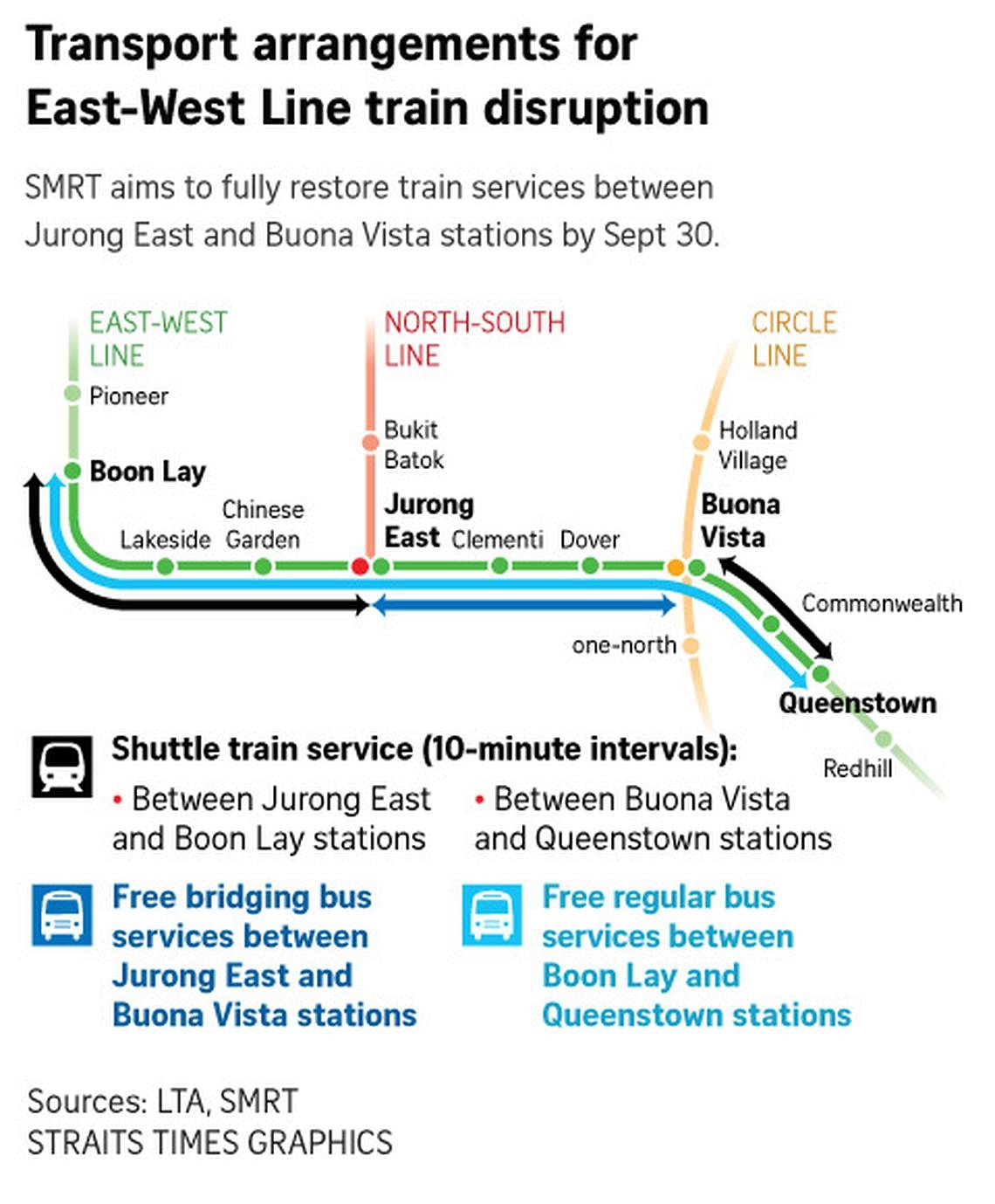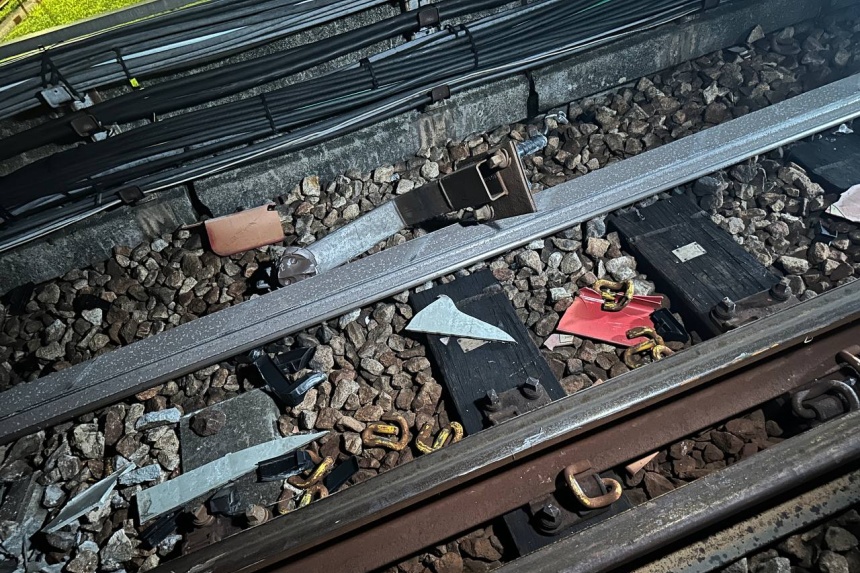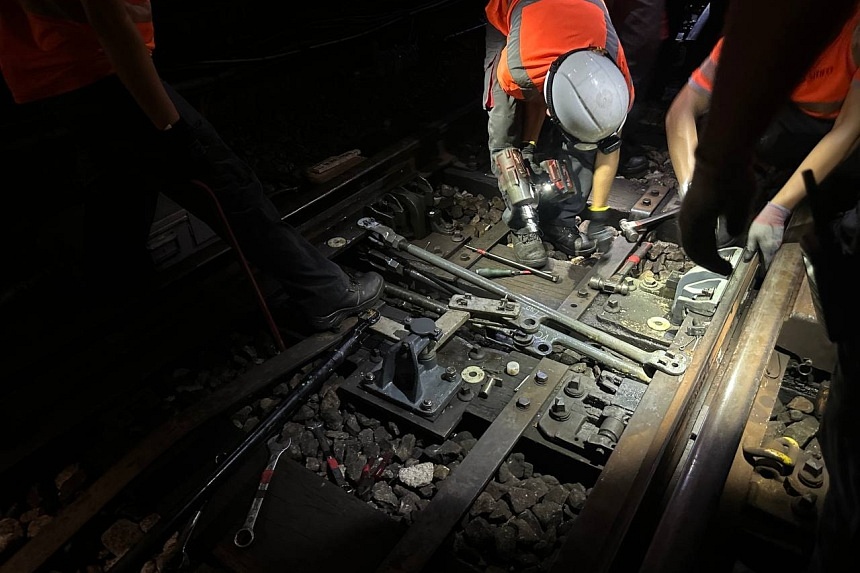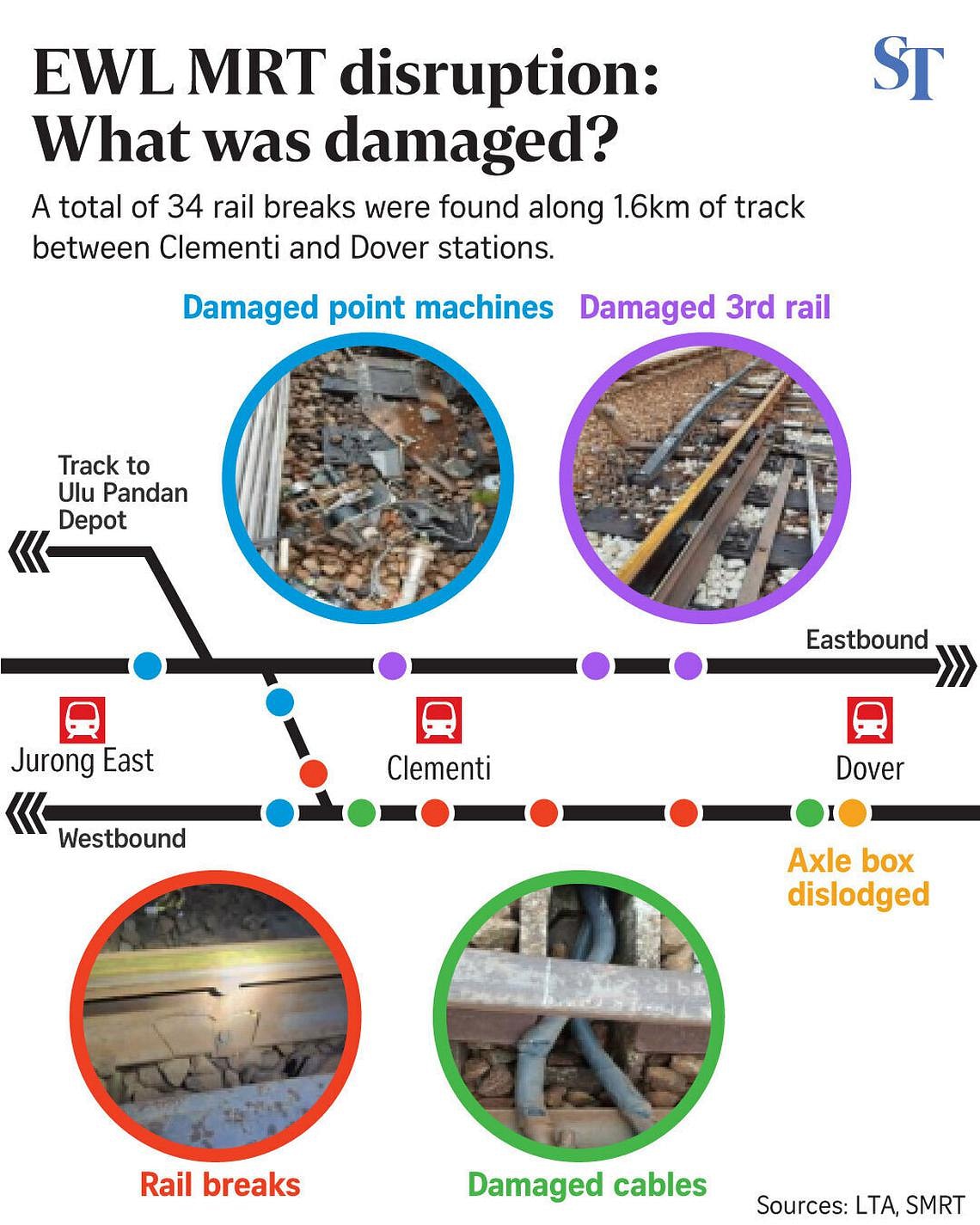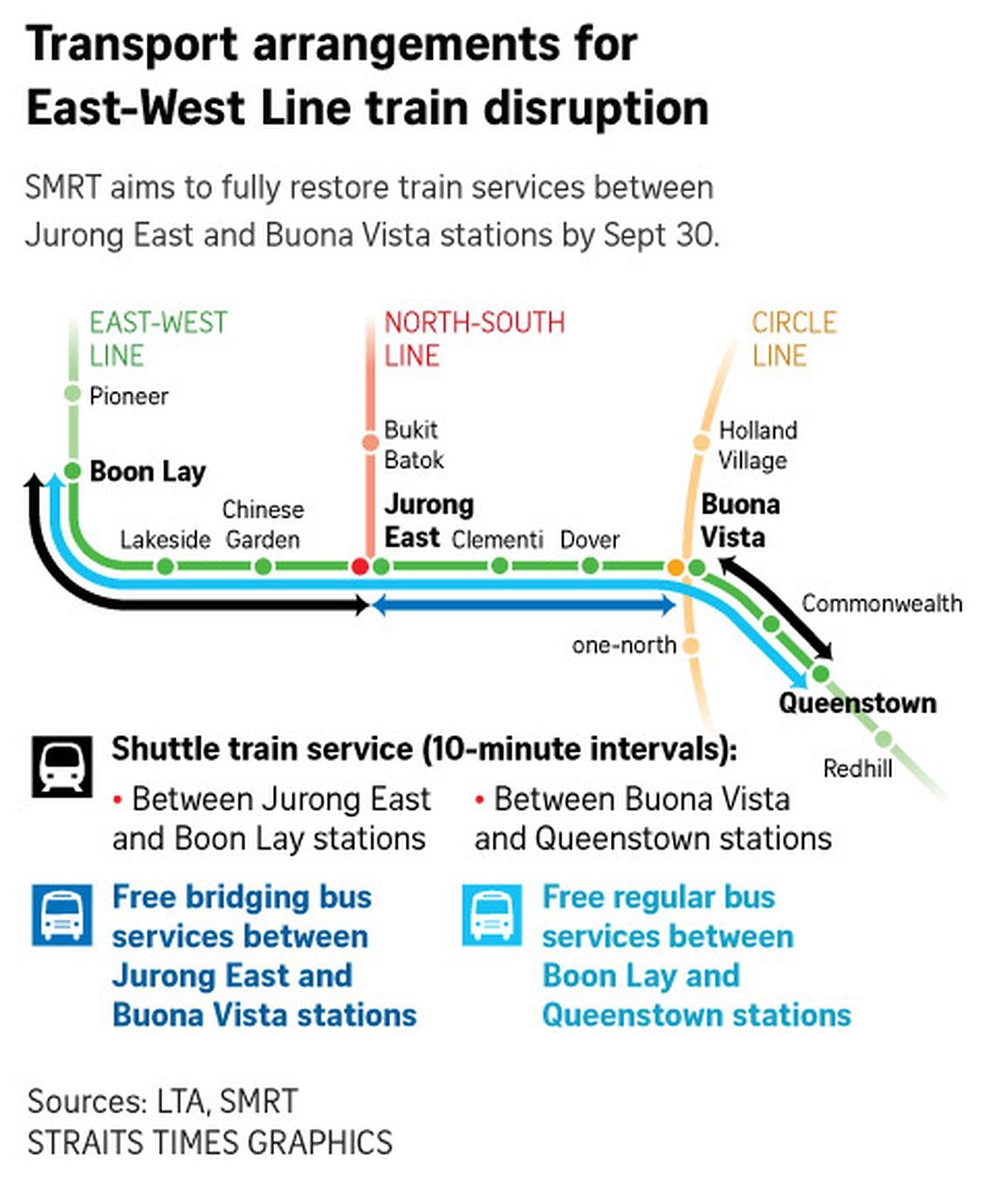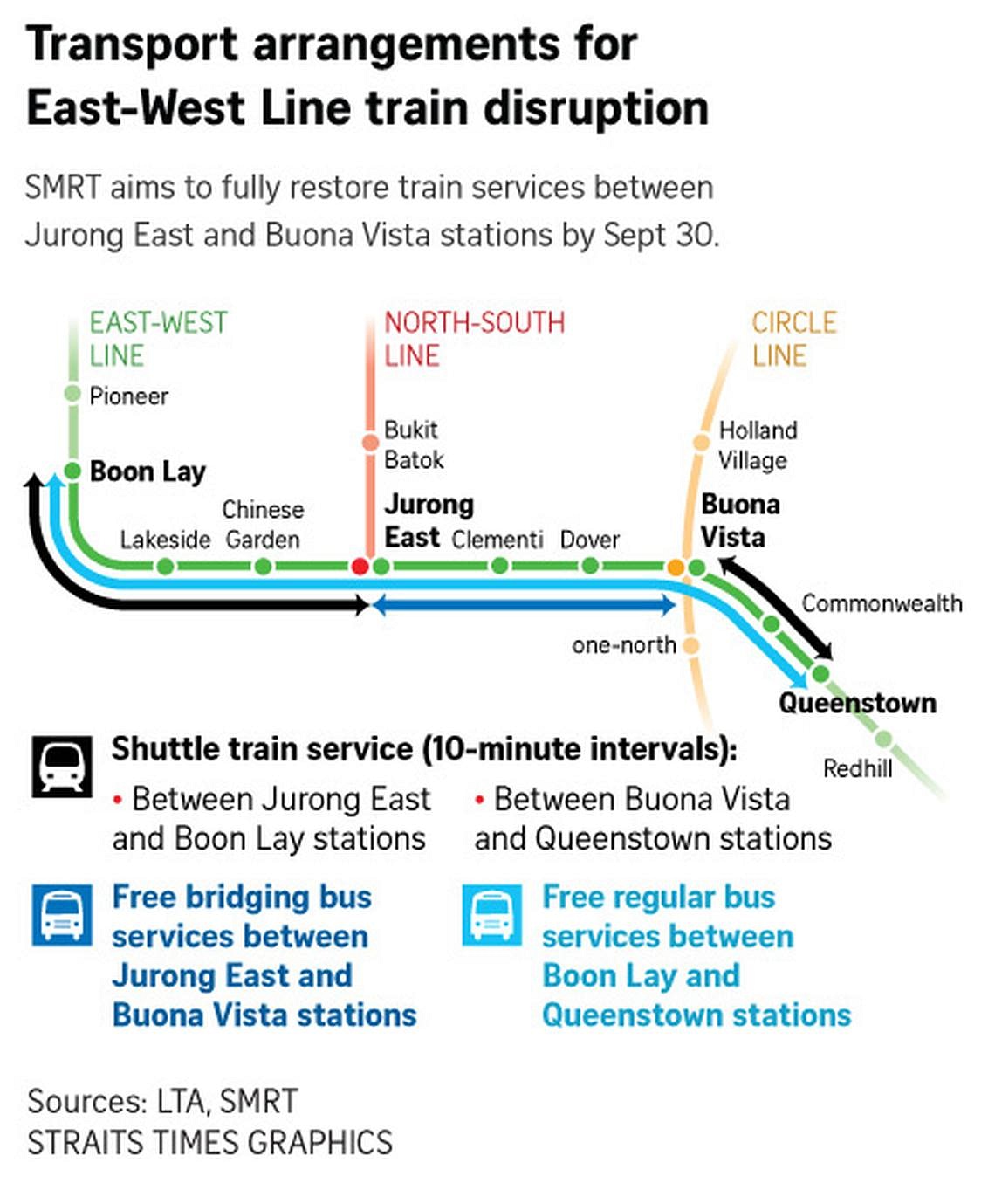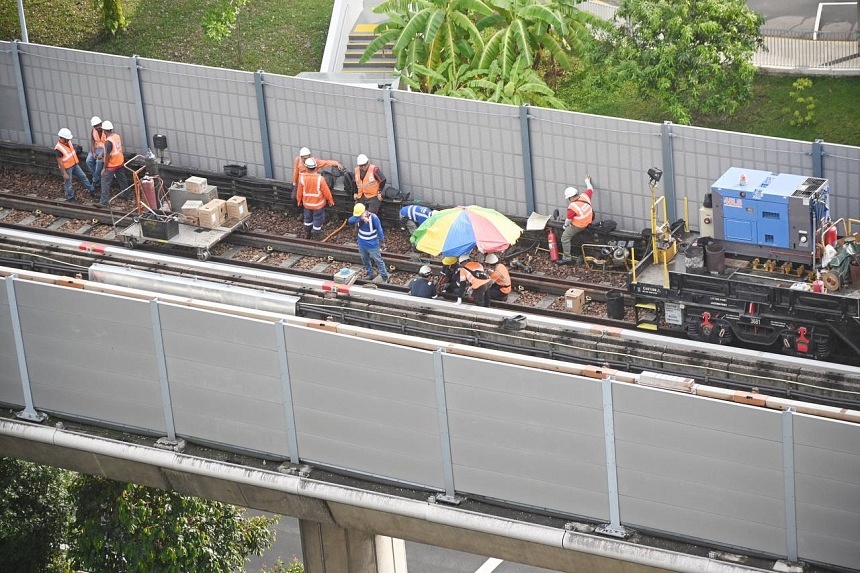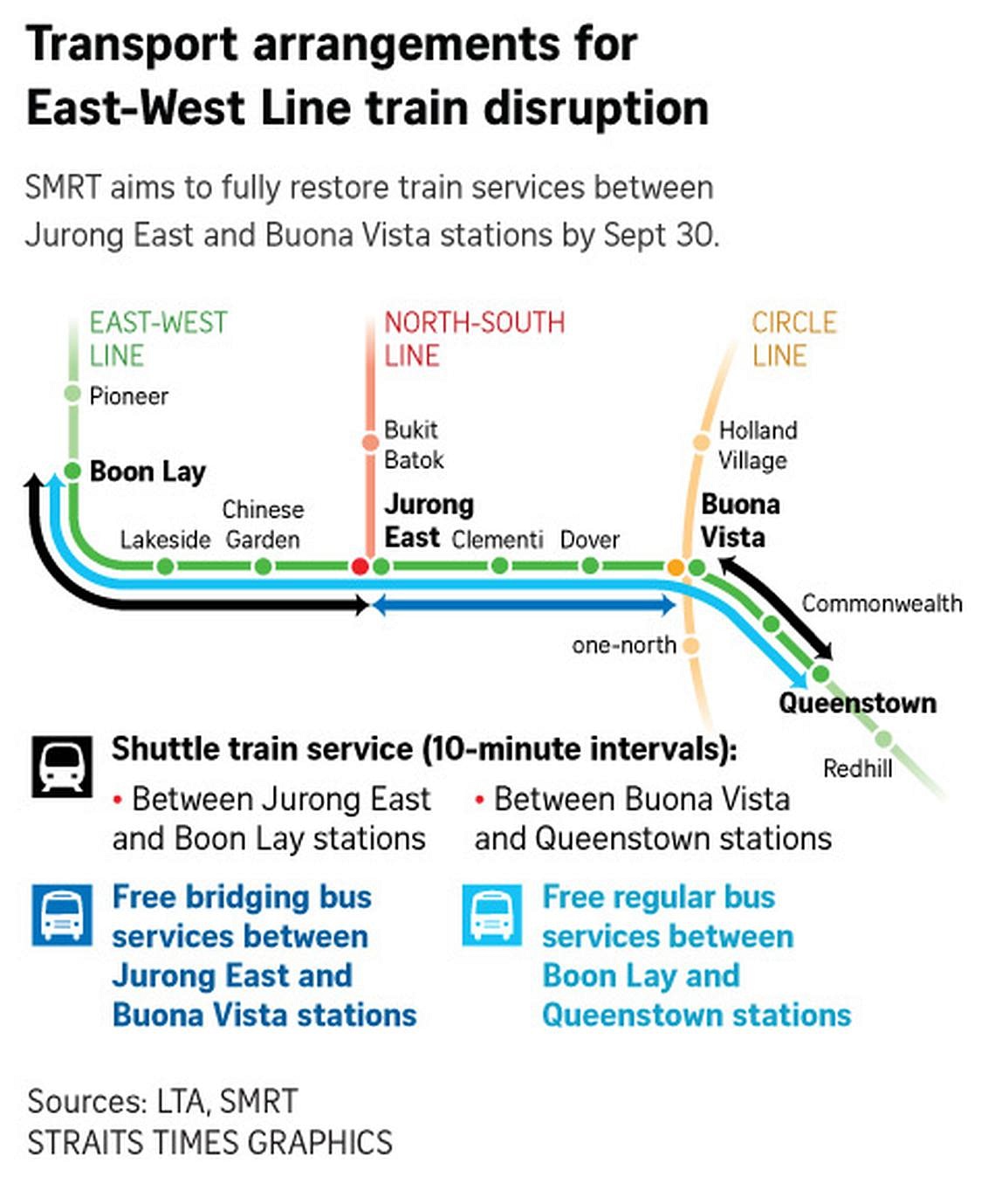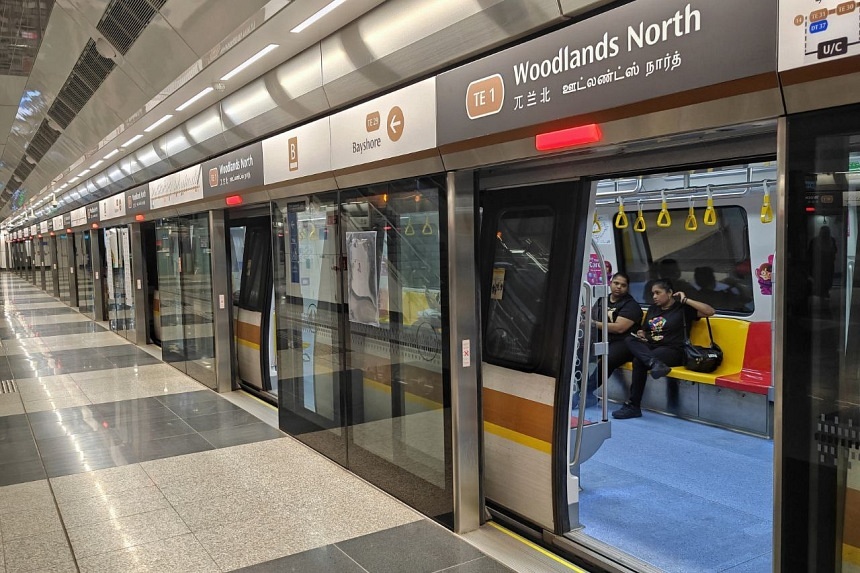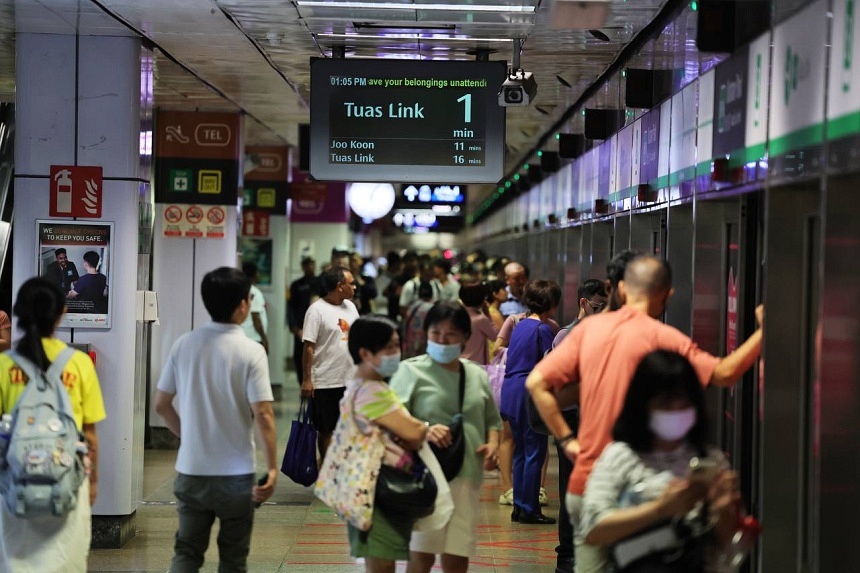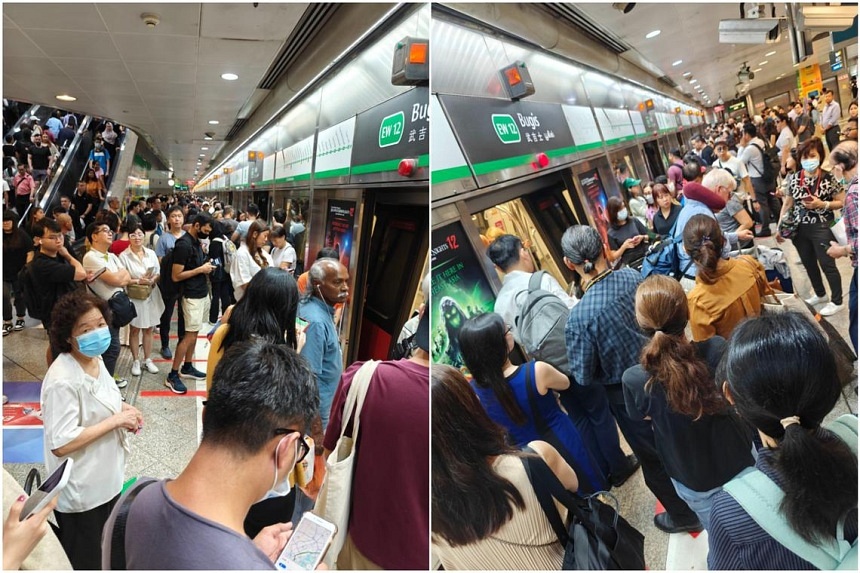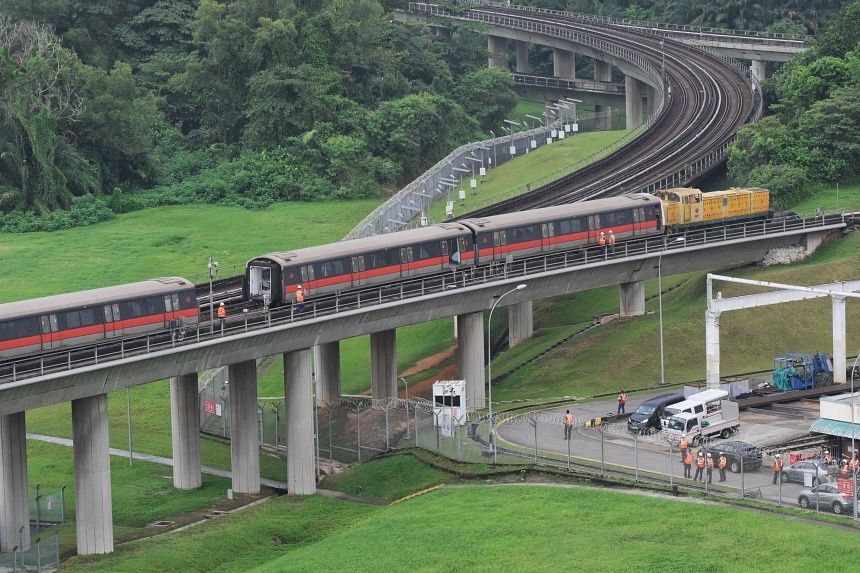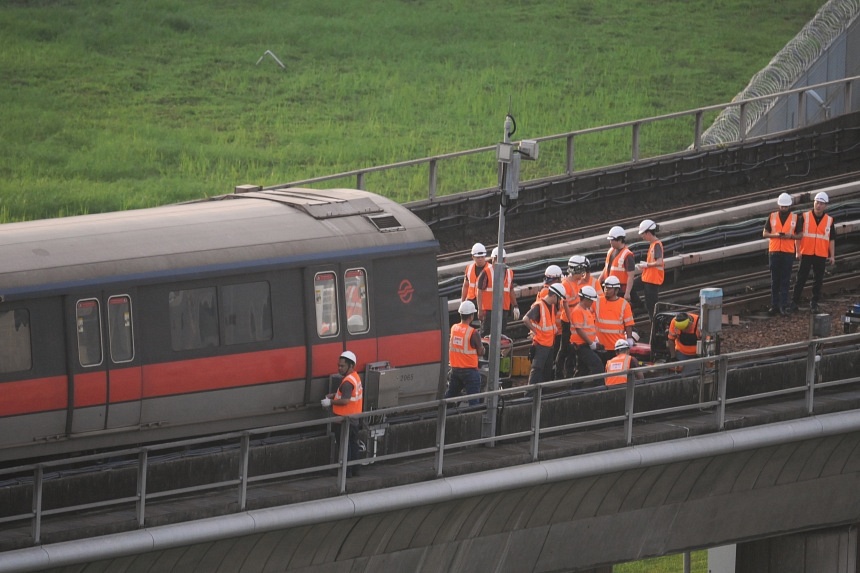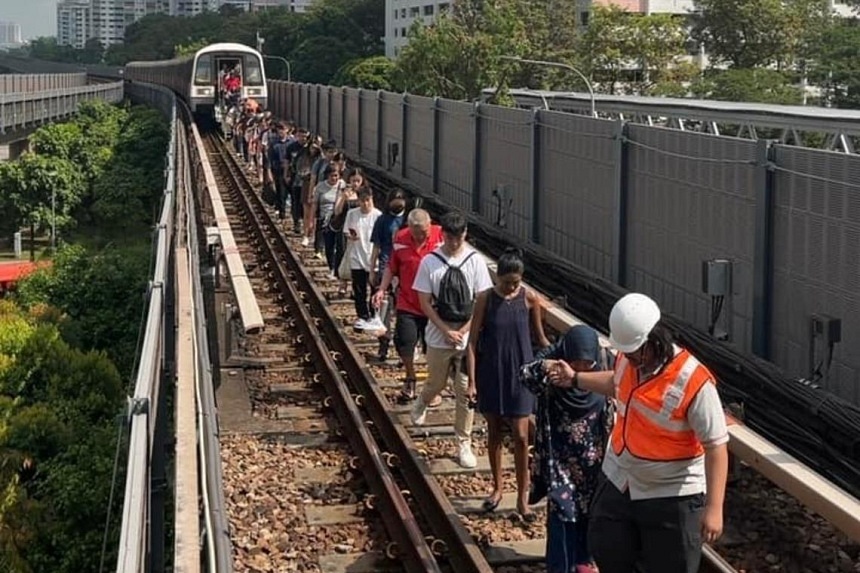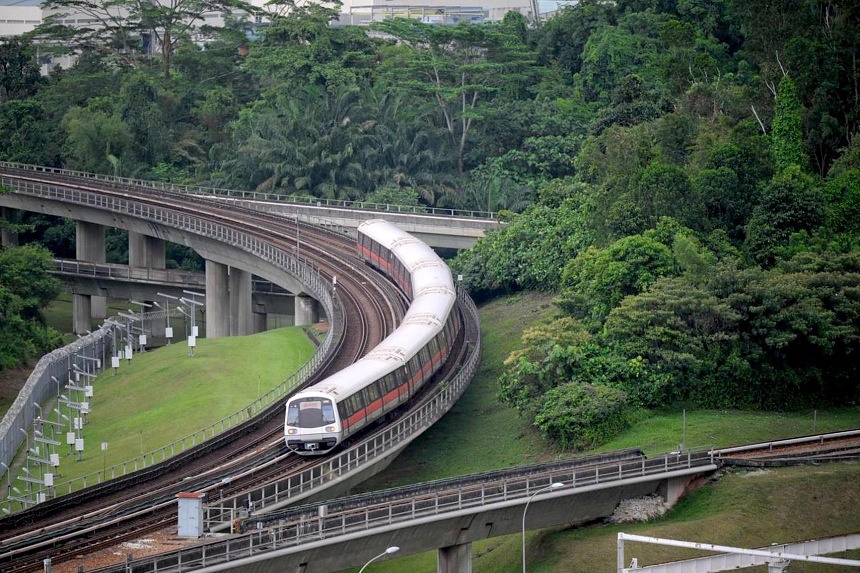- Joined
- Jul 25, 2008
- Messages
- 13,542
- Points
- 113
Train disruption on EWL to last several more days; SMRT aims to restore services on Sept 30
1 of 6
Passengers queueing for bridging bus services near Buona Vista MRT station at 7.30pm on Sept 26. ST PHOTO: KELVIN CHNG

Kenneth Cheng
Assistant News Editor
Sep 28, 2024
SINGAPORE – The disruption of train services between Jurong East and Buona Vista stations on the East-West Line will last several more days, with rail operator SMRT aiming to restore services fully on Sept 30.
SMRT and the Land Transport Authority (LTA) had said earlier on Sept 26 that they aimed to partially restore services on Sept 27 by running a shuttle train service that would go up and down the affected four-station stretch every 20 minutes.
Shelving this plan late on Sept 26, LTA and SMRT said they had tried their best to make the shuttle service option work by speeding up repairs on one of the tracks.
“We have since determined that it can be done, but it would mean slowing down the repairs on the parallel damaged rail, as repairs cannot be done when the shuttle train service is in operation,” they said.
On balance, it is “better to prioritise repair and expedite restoring full service earlier”, rather than run the shuttle service, they added. “SMRT is aiming to restore full service on Monday (Sept 30), and running the shuttle train could risk delaying full restoration by at least a few days.”
LTA had earlier told The Straits Times that it is difficult to say exactly when services can resume fully due to the extensive work and unpredictable weather. It added that there is also limited space to work on the rail viaducts, even as more people are deployed on-site.
On Sept 25, a faulty train that was withdrawn from service and on its way back to a depot had caused extensive damage to tracks and trackside equipment near Clementi and Dover stations.
Singapore’s second-longest rail disruption affected about 874,000 passengers over two days – some 358,000 passengers on Sept 25, and an estimated 516,000 on Sept 26.
It was triggered by a first-generation Kawasaki Heavy Industries train. The eastbound train encountered a fault near Clementi station at about 9am on Sept 25 and all passengers disembarked at that station.
SMRT withdrew the train from service by turning it around onto the westbound track.
A defective component of the train’s wheel set, known as an axle box, dropped onto the tracks near Dover station while the train was returning to Ulu Pandan Depot, which is between Clementi and Jurong East stations.
The axle box was on the third carriage of the six-carriage train, which has been in service for more than 35 years.
This caused the wheels of one of the carriage’s two bogies to come off the rail on which trains run. A bogie is a structure below the carriage with two sets of wheels and each wheel set has two axle boxes attached to it.
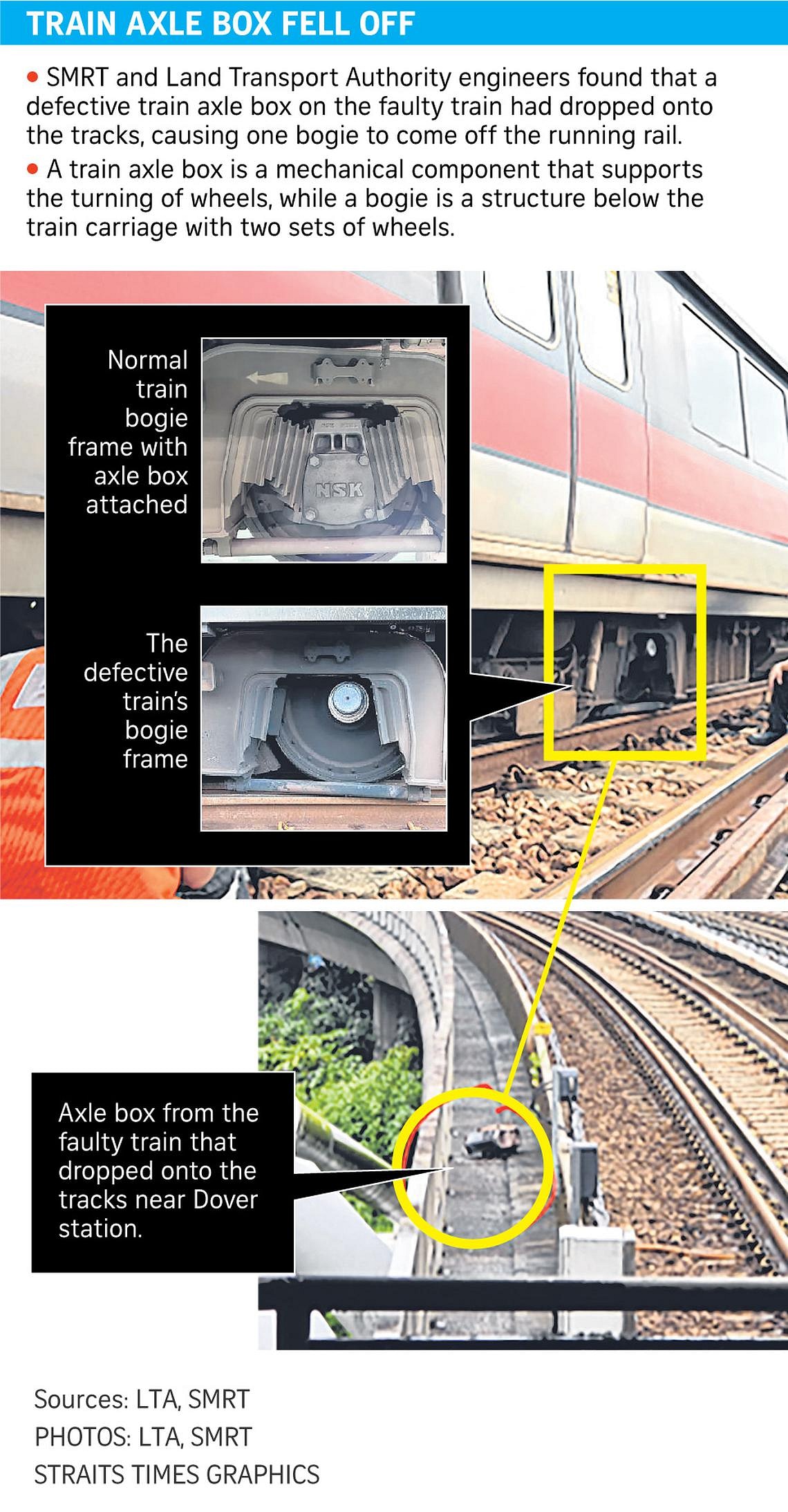
This is the first time such an incident has happened on SMRT’s trains.
With one bogie derailed, the train severely damaged the tracks and equipment on the tracks as it was being taken to the depot.
The damage it wrought caused a power trip at about 9.25am, stalling other trains and crippling services across nine stations between Boon Lay and Queenstown.
One train that stalled near Clementi station was carrying about 850 passengers, who had to disembark on the tracks and were guided back to the station platform.
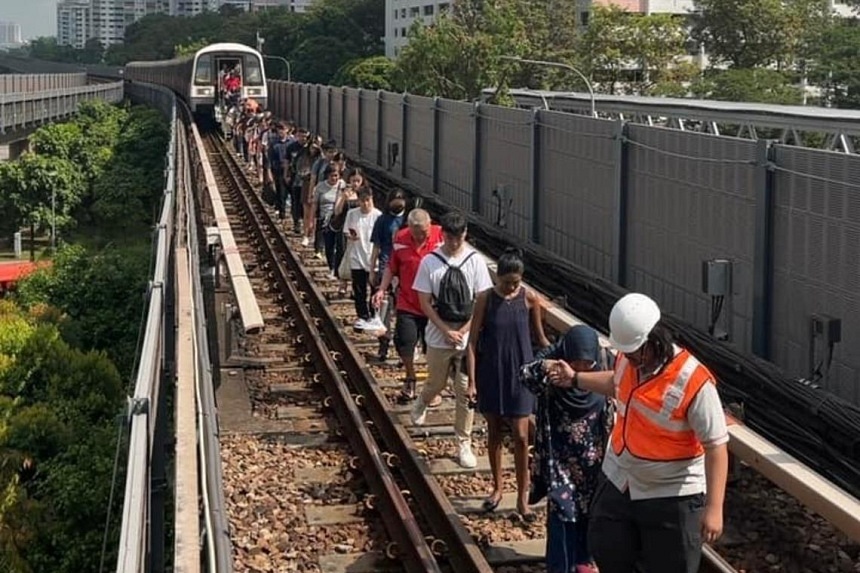
Passengers who were on a train near Clementi MRT station had to disembark on the tracks and were guided back to the station platform. PHOTO: SMRT/FACEBOOK
Engineers later found 34 rail breaks, such as cracks or chips, along 1.6km of tracks between Clementi and Dover stations after overnight checks. The train also damaged three point machines that are used to divert trains to different tracks, stretches of the third rail on the eastbound track that supplies power to trains, as well as power cables and rail fasteners.
The third rail serving the track into Ulu Pandan Depot is linked to the same power supply that serves the third rail on the eastbound track. Hence, when the defective train damaged the third rail while entering the depot, it also tripped the power supply to the eastbound track.
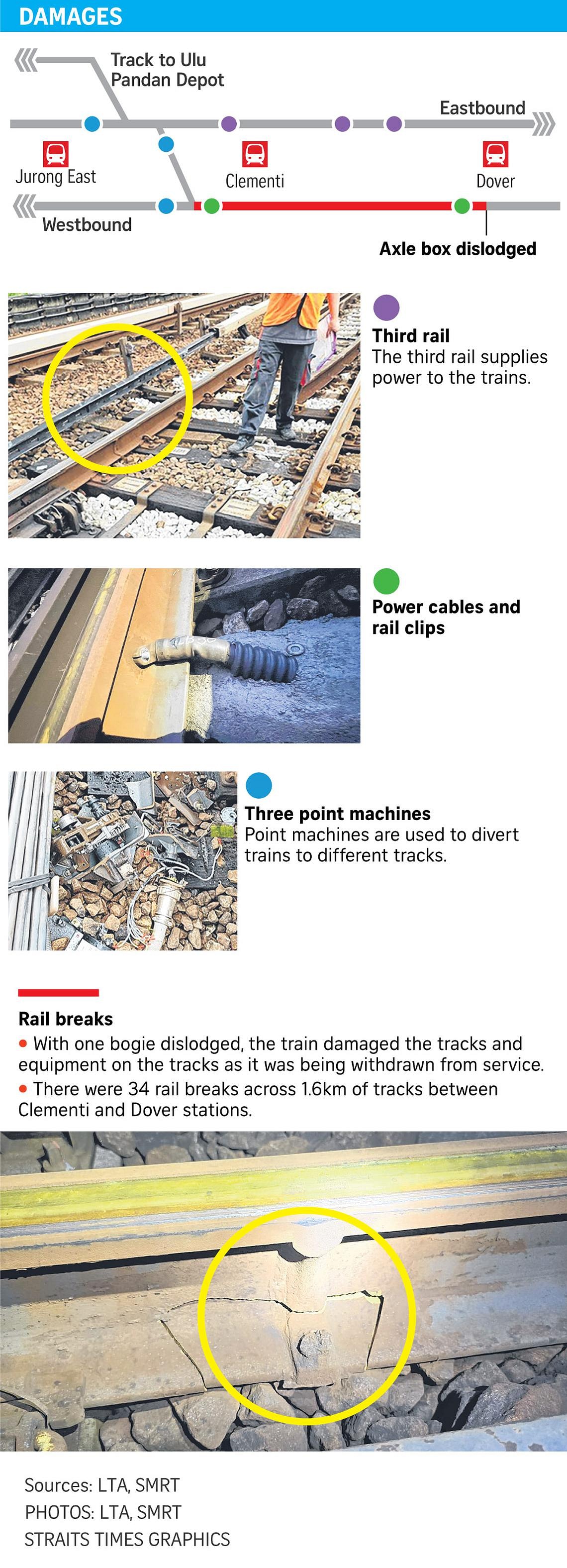
Transport Minister Chee Hong Tat said late on Sept 26 that more than 300 engineers and technicians from LTA and SMRT have been working day and night to carry out repairs and checks on the damaged tracks and equipment.
“As the damage is very extensive, they have to do this carefully, and it requires a lot of time,” he added during a visit to the tracks leading to Ulu Pandan Depot.
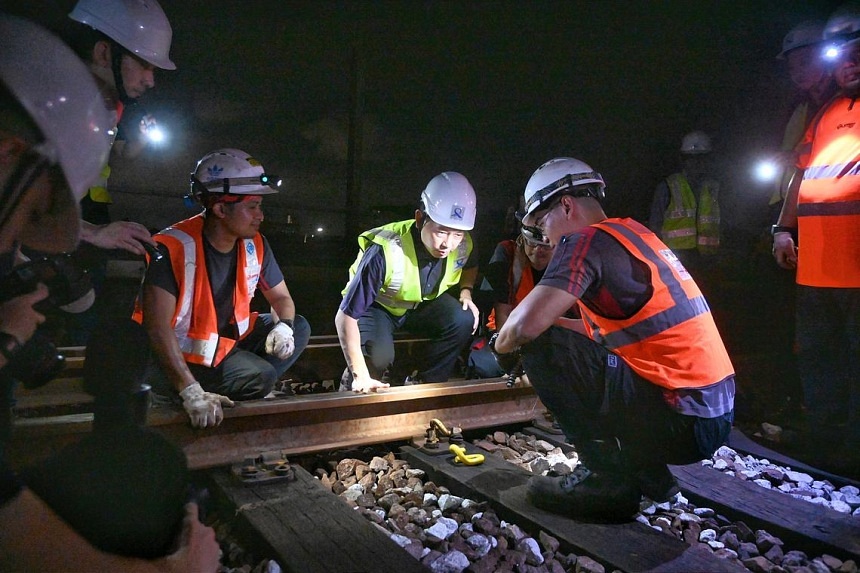
Transport Minister Chee Hong Tat (centre) visiting the tracks leading to Ulu Pandan Depot late on Sept 26. ST PHOTO: DESMOND WEE
The minister thanked the workers involved for their hard work and dedication, as well as commuters for their understanding and patience and for showing concern for the rail staff.
In an earlier video message posted on Facebook on Sept 26, Mr Chee said: “I would like to offer my sincere apologies to all our commuters for the disruption. Our workers are doing their best to safely restore train services as soon as possible.”
LTA and SMRT said that SMRT’s engineers and technicians have been working continuously since Sept 25 to restore and replace the damaged tracks and equipment. The faulty train has also been towed back to the depot.
SMRT will continue to operate shuttle train services between Buona Vista and Queenstown stations, and between Jurong East and Boon Lay stations.
About 80 double-decker buses have also been deployed to provide free bridging services for affected passengers between Jurong East and Buona Vista stations.
In addition, 620 ground staff from LTA, SMRT, transport operators SBS Transit and Tower Transit as well as police officers managed the crowds during the morning peak period on Sept 26.
LTA and SMRT also carried out functionality checks on the axle boxes of all Kawasaki trains before these were put in service, and all passed the checks.
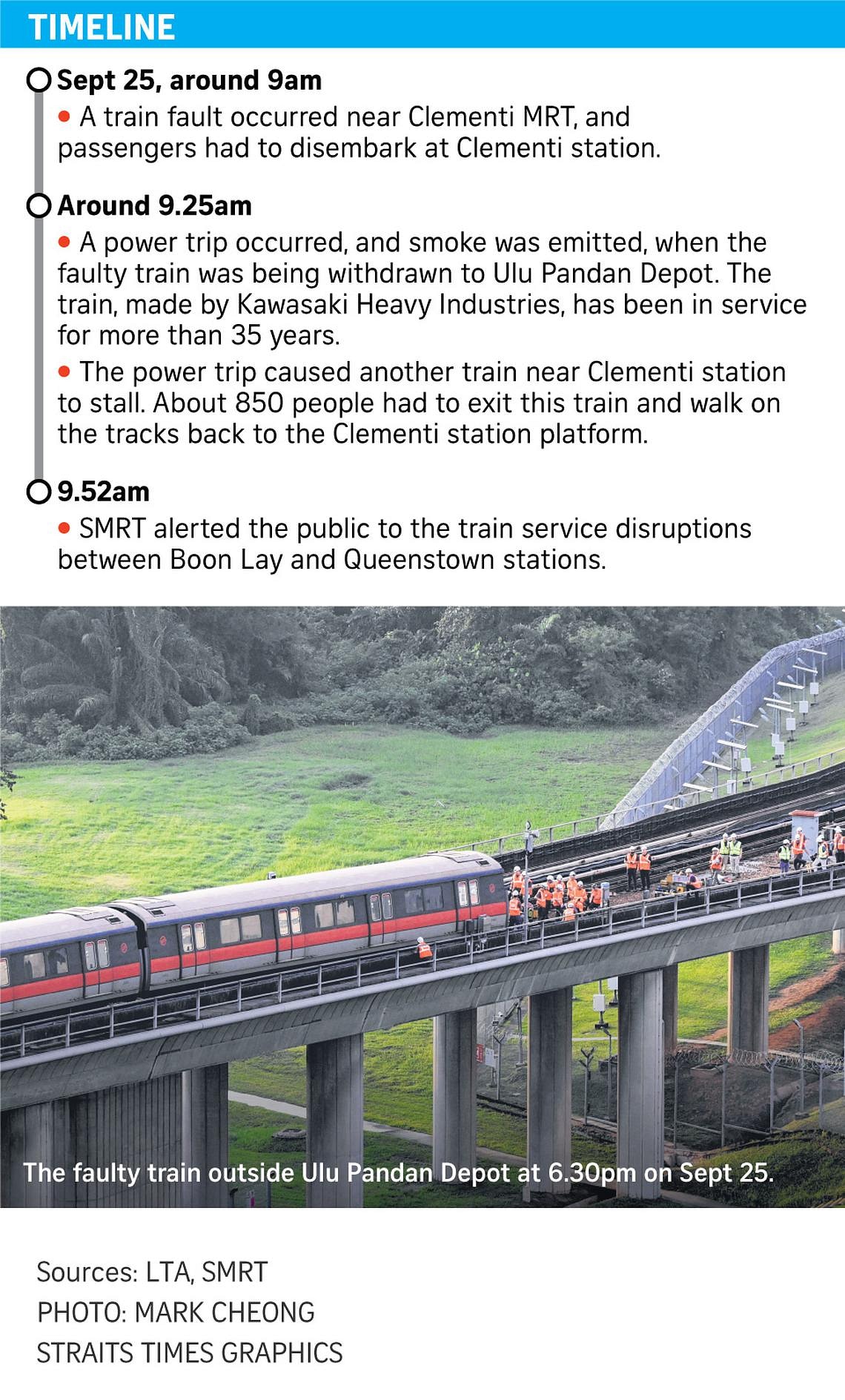
This is the third rail disruption in nine days.
On Sept 17, a power fault disrupted services across the entire Circle Line (CCL), which SMRT also runs. The next day, a power trip disrupted the power supply to the entire 35km CCL after a fire broke out at a rail depot.
The longest train disruption on record is the stoppage of train services between Joo Koon and Tuas Link stations from Nov 16 to Nov 20 in 2017, after a software glitch in the signalling system resulted in two trains colliding at Joo Koon.
The suspension of train services between Joo Koon and Gul Circle stations was later extended till mid-2018, when the East-West Line switched to a new signalling system.
